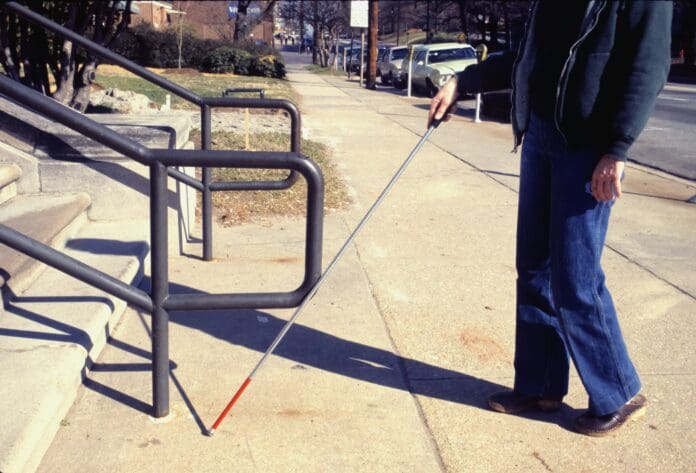This post is also available in:
 עברית (Hebrew)
עברית (Hebrew)
A new wearable system designed to support navigation for blind and visually impaired individuals could mark a turning point in assistive technology. Detailed in a recent Nature Machine Intelligence study, the system uses artificial intelligence to analyze surroundings and guide users through complex environments using audio and tactile signals.
Unlike traditional visual aids or invasive solutions, this system offers a non-medical, external alternative. It captures visual data through an onboard camera, processes it in real time using a custom-developed AI algorithm, and translates it into navigational instructions. These instructions are then conveyed through two main channels: bone conduction headphones and specially designed haptic wristbands.
The bone conduction headphones relay spoken guidance directly to the inner ear without obstructing environmental sounds — a crucial feature for urban mobility. Simultaneously, the system uses flexible, wearable “electronic skin” patches that vibrate to warn users of lateral obstacles, helping with precise directional movement.
To assess its effectiveness, the researchers conducted trials with both humanoid robots and human participants who are blind or partially sighted. Testing was carried out in controlled virtual environments as well as real-world settings. Participants demonstrated clear improvements in navigation accuracy — for example, successfully maneuvering through obstacle courses and identifying and reaching objects with higher confidence and accuracy, according to TechXplore.
The study emphasizes the importance of multi-sensory integration in assistive devices. By combining visual input, auditory feedback, and tactile cues, the system offers a more intuitive user experience compared to earlier solutions. The success of this prototype suggests the potential for broader applications, not just in mobility aids, but also in rehabilitation and smart wearables for other sensory or cognitive impairments.
As researchers work to refine the system’s design and adaptability, this development could pave the way for smarter, more user-friendly assistive technologies that improve autonomy and quality of life for millions worldwide.

























